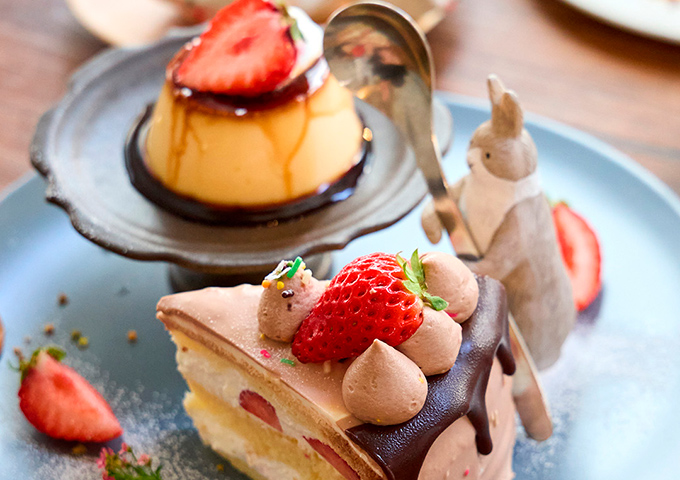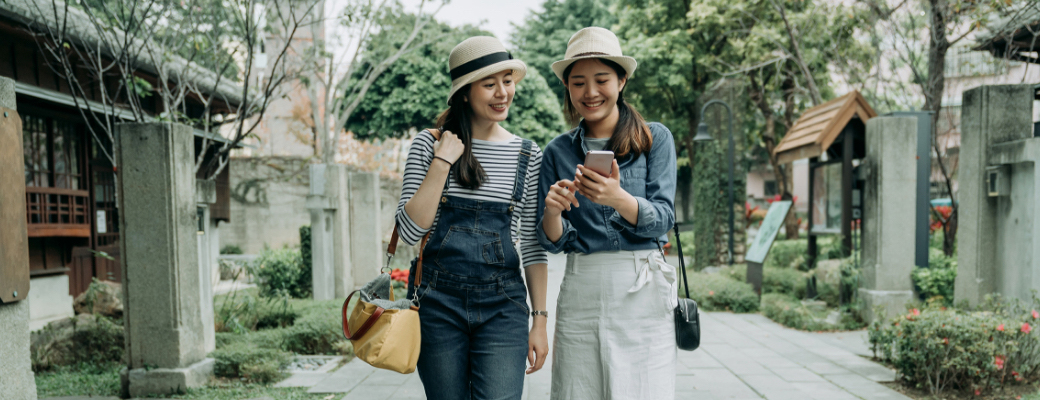
Food and Drinks
Take a relaxing break with cute sweets along the Nankai Line.

“Two bows, two claps, and one bow” refers to what? An explanation of the flow and history of shrine visits.
The etiquette for shrine visits is expressed by the formula "Ni-rei, Ni-hakushu, Ichi-rei". In this article, we will explain the history and procedure of this ritual. We will also introduce the differences between shrine visits and temple visits.
"Two bows, two claps, and one bow" is a basic ritual observed at many shrines in Japan as part of the worship etiquette. Each gesture in the ritual carries symbolic meaning; for example, clapping is believed to invite the deity or dispel negative energy. It's not just a simple clap; the action is performed with sincerity and respect to express reverence to the deity.
【Offering】
First, stand in front of the offertory box. If wearing a hat, remove it, and if carrying any belongings, set them aside. Next, bow slightly, then quietly place the offering in the offertory box. When doing this, it's customary to place the offering on top of the box. While ringing the bell usually follows putting in the offering, it's advisable to be flexible about this when the shrine is crowded.
【Two Bows】
Assume a proper posture and bow deeply twice. Lower your head firmly, approximately to the point where both palms cover your kneecaps (about 90 degrees).
【Two Claps】
With both hands together at chest height, lower the middle finger of the right hand to around the second joint of the left hand's middle finger. Then, open both hands parallel to shoulder width and clap twice slowly. After the second clap, join your hands together in prayer.
【One Bow】
Finally, bow deeply once more, nod slightly, and then step back.
The origin of "Two bows, two claps, and one bow" has various theories, but one theory suggests it dates back to around 1875 during the Meiji era.
It is said that the initiation came from a book called "Shrine Festival Rituals", published by the Ministry of the Imperial Household Agency, responsible for overseeing imperial ceremonies and the Imperial Household Agency, responsible for overseeing imperial ceremonies and the Imperial Household Agency. The term "repeated bows and claps" was written in this book. Later, in 1907, with the establishment of "Shrine Festival Rituals and Ceremonial Etiquette", the ritual was formalized, and the sequence "repeated bows and claps (Shrine Festival Rituals and Ceremonial Etiquette), the ritual was formalized, and the sequence "recapitulation of the prayer, clapping two hands together, clapping two hands together, recapitulation of the prayer" became the standard.
Subsequently, through several revisions to the ritual, it is believed that the form "Two bows, two claps, and one bow" gradually spread among general worshippers by omitting the recitation of prayers.
"The basic etiquette when visiting a temple is 'Gassho Ichirei.' This involves placing your hands together in front of your chest in a prayerful gesture. It's a quiet gassho. During this time, those with specific prayers may recite them while maintaining the gassho. Finally, it is customary to bow once.
Unlike at shrines, clapping is not done, so be mindful of that. Additionally, it's customary to bow when entering the main gate, the main hall, or any other significant areas within the temple."
Once you've learned the flow of worship, try visiting a shrine! In this article, we explained the process and history of 'Ni-rei Ni-hakushu Ichi-rei' (Two bows, two claps, and one bow), which is useful when visiting shrines. Along the Nankai Line, there are many famous shrines with a rich history. Why not learn the basic worship etiquette from this article and give it a try?
【Read more】
Check out related articles introducing worship methods, recommended shrines along the Nankai Line, and more!

